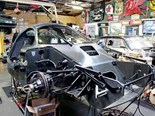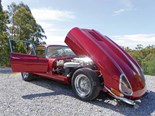Jaguar XJS (1975-1996): Buyers' Guide






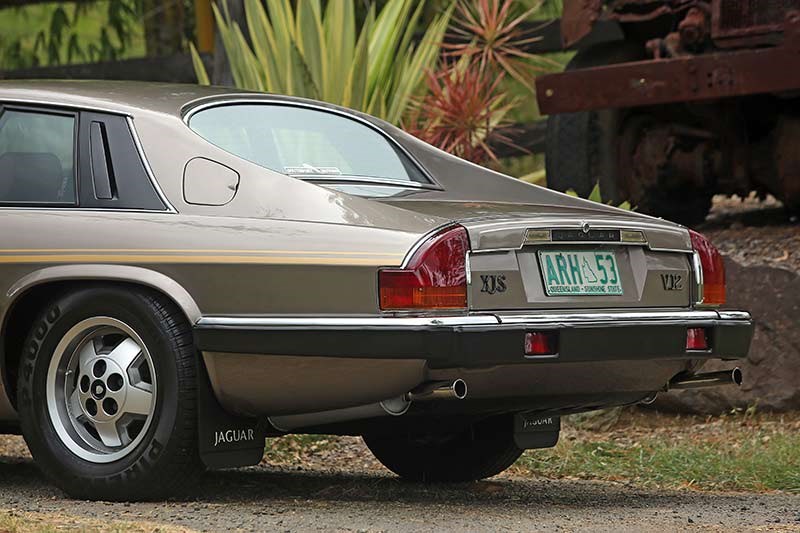
















|

|

|

|

|

|

|

|

|

|

|
Browns Lane's big GT was a shock to the system back in 1975 but is it a viable option if you're after a V12 classic on a modest budget?
1975-1996 Jaguar XJS
Expectation is a funny old thing. Any car following in the footsteps of the iconic Jaguar E-Type was always going to have its work cut out convincing a public that had become used to a specific form from jaguar’s sports cars and when the XJ-S appeared in 1975, it had fatally erred. As Jaguar historian Philip Porter noted in his 1996 book Jaguar XK8: "No one could deny that the XJ-S was technically excellent, but it committed one cardinal sin, especially for a Jaguar. It lacked great beauty."
"The last E-types rolled off the production line in 1974 and after a brief hiatus the XJ-S appeared in 1975. The reception was a rather embarrassed silence. This was unprecedented for a Jaguar. I remember the day well, and I remember the great disappointment." Yet time has, if anything, been kind to the XJ-S. Where the E-Type now looks a bit of a museum piece, those bold sweeps, planes and arcs of the XJ-S that so alienated the motoring press have aged well.
It’s hard to overstate quite what a mess Jaguar, BLMC and the British economy were in at the start of the Seventies. The designer of the XJ-S, Malcolm Sayers, had died in 1970 and Sir William Lyons, the company’s charismatic chairman and proponent of the XJ-S programme, stepped down in March 1972. The Yom Kippur War erupted in October 1973 starting a spiral of events that led to an oil crisis. Hardly the perfect backdrop to be launching a 12-cylinder grand touring coupe.

To make matters worse, Jaguar’s profits had been siphoned off to prop up ailing parts of BLMC. Technical Director Bob Knight reckoned that between 1968 and 1974, $48m was skimmed off Jaguar’s bottom line. It wasn’t enough. In December 1974, the coffers at BLMC ran dry and the British government was forced to step in. By early 1975, Jaguar’s functional autonomy had gone. Cue the XJ-S.
Australia saw its first shipment of cars in 1976, including some now-prized four-speed manuals. Most were automatic though, with air-conditioning as a standard feature and Kent alloy wheels.
Interior trim was leather of course, with a typically confusing Jaguar dash and massive console separating driver from passenger. Early cars had none of the timber embellishments that had characterised almost every enclosed Jaguar ever made. In the rear were nicely-shaped seats that ensured the dog or shopping had somewhere comfortable to sit but humans with legs weren’t really welcome.
The XJS sat on a Saloon floor-pan that had been shortened by 180mm, with extra strengthening and sound absorbent panels. Even with all the extras installed, early manual-transmission cars weighed a trim 1680kg.
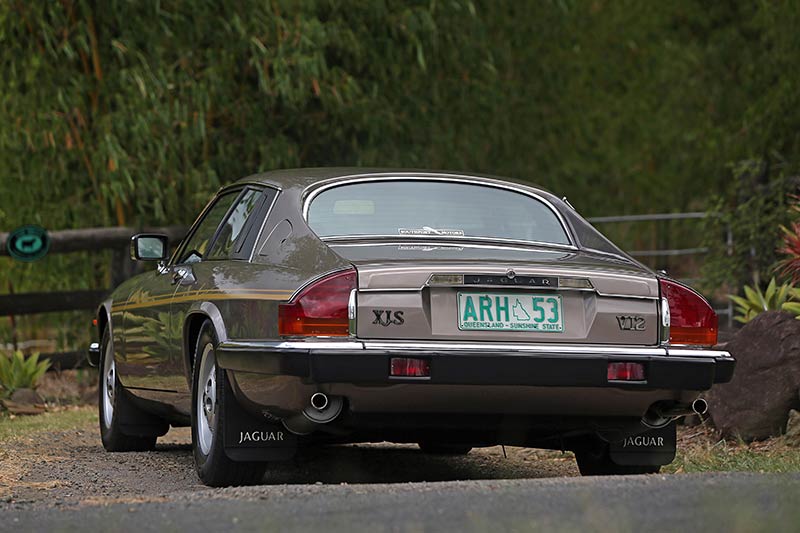
Fuel consumption remained a concern for Jaguar, so with help from engineering guru Raymond Mays, it devised ‘Fireball’ cylinder heads that burned fuel more completely than before and helped the XJS ‘HE’ (High Efficiency) to curb its heavy drinking habits.
The revamped V12 featured a 12.5:1 compression ratio and in UK-spec produced 220kW but 198kW here. More significant was a 10 percent gain in torque, now developed at 3000rpm not 4500. The change in engine characteristics possibly helped with the fuel savings as well; the driver no longer feeling a need to floor the accelerator just to produce some low-speed response.
Acceleration had improved marginally in 1979 when Jaguar swapped Borg-Warner transmissions for the smooth and more efficient GM400. At the same time the manual option was quietly withdrawn, although not for competition cars that would compete successfully in European Touring Car events and even travel to Australia to win the 1985 Bathurst 1000.
Promoting the XJS as exclusive executive and celebrity transport must have been difficult without a soft-top version and in 1983 a Cabriolet joined the range. It was the first Jaguar to offer this body style and also debuted the single overhead-cam 3.6-litre engine that would replace the long-serving XK twin-cam.
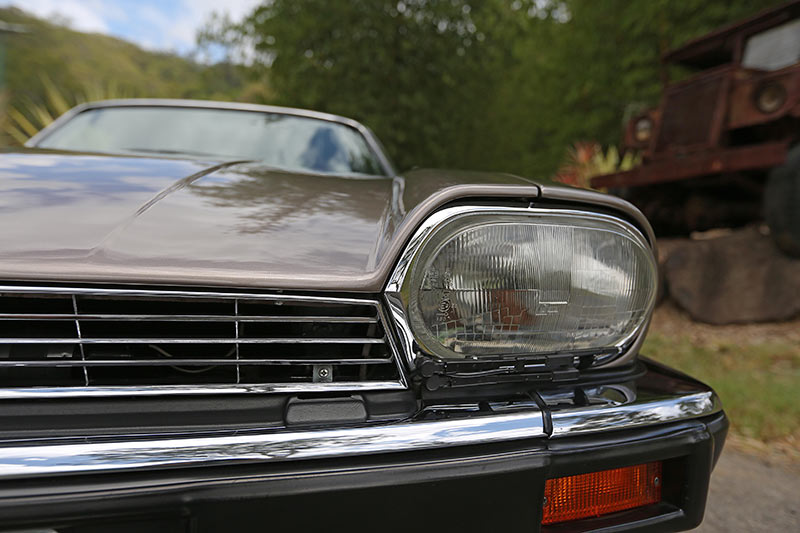
With fears quelled of a North American ban on open top cars, Jaguar was from 1987 finally able to offer a full convertible. Extra strengthening boosted weight to nearly two tonnes so the V12 engine was standard. Unlike the Cabriolet which was a strict two-seater, the Convertible provided accommodation for a couple of pain-tolerant rear passengers and there was a restyle that included rectangular rear lights. Performance from V12s diminished slightly when modified to run on Australia’s 91RON unleaded fuel.
The six-cylinder engine was discontinued along with the Cabriolet in 1987 but in 1991 it came back; enlarged to 4.0 litres and available in both the Sport coupe and convertible form. Output from the bigger engine was a still-modest 166kW but performance testing of a coupe revealed 0-100km/h times of around 8.5 seconds. Four-speed automatic transmission was mandatory in Australian cars.
A 6.0 litre engine had been available to XJR-S buyers since 1989 and in 1992 a quite different production version was introduced – identical in capacity but with less expensive electronics and 14kW less power.
ON THE ROAD
The XJS is a big car and not one that shrinks with familiarity. Edge into a parking space that’s on the small side and not only do you risk expensive scraping but once you do get in the door might be too big to open.
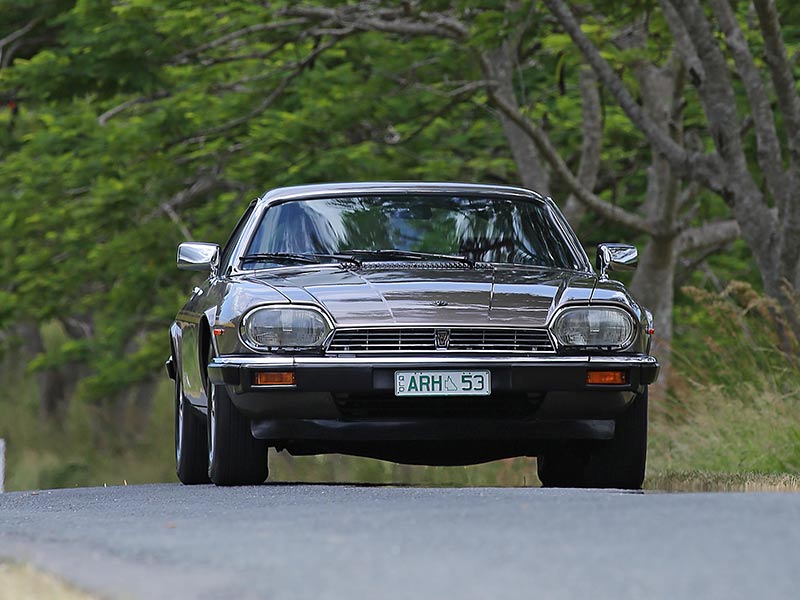
Those up front are cared for very well but the rear seat – where supplied – is cramped with minimal visibility in any direction. Drivers on the short side of 180cm will need a giraffe neck to sight the end of an XJS bonnet and x-ray vision to work out what’s happening behind them. A door mirror on the side opposite the driver is essential to safe lane-changing.
Power steering and air-conditioning were expected inclusions when a car cost as much in 1976 as a modest inner city house. But having gone to the trouble of providing slightly excessive steering assistance and a very manageable 2.75 turns lock to lock, Jaguar still filled the driver’s lap with a steering wheel big enough to manouvre one of the old and massive Mark 7s.
Brakes are big discs all round and normal road use should never induce anything more worrying than some smoke or an unpleasant odour after fast downhill running. If the pedal feels soggy or pulses under light pressure the car has brake problems.
Standing start acceleration, about which the target American market was quite keen, suffered due to the car’s weight penalty and unresponsive Borg-Warner Type 12 transmission. An automatic tested in 1977 by Modern Motor lumbered to 100km/h in 8.3 seconds while consuming fuel at 16.2L/100km. The manual was said to get below 7 seconds for 0-100km/h but only 352 manual V12s were made.
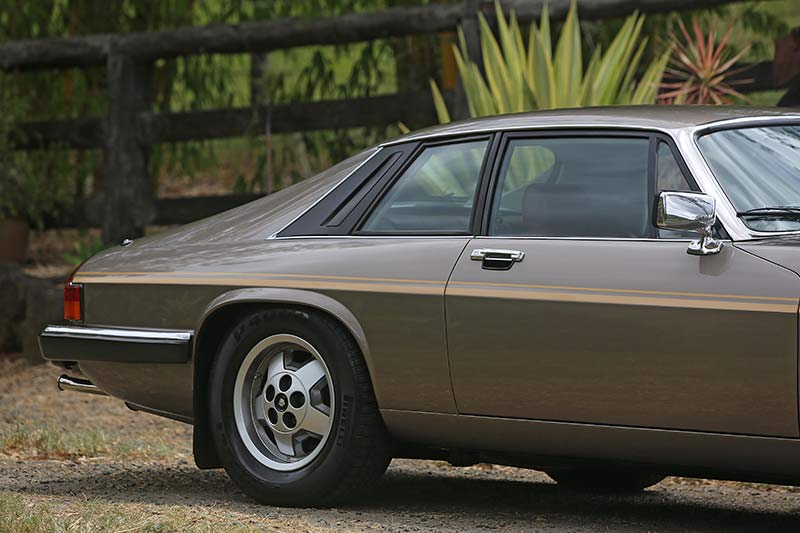
Fast forward to 1983 when Wheels magazine took a trip in the new XJS HE. Despite the effects of clumsy and power-sapping emission controls, 0-100km/h times had suffered just an eye-blink 0.2 second increase, however the standing 400 metres took 0.7 longer. Fuel consumption improved marginally to 15.3L/100km.
Although the XJS started life with a big engine and ended its reign more than 20 years later with a bigger one, don’t dismiss the AJ6-powered cars, especially if you can lay hands on a five-speed manual. A British-market 3.6-litre evaluated some years ago for a Dealer Choice column was entertaining and felt like it had more under its long nose than the claimed 168kW.
BUYING A JAGUAR XJS
Pretty much anyone can afford to buy an XJS but buying one you will enjoy owning could be a lot more expensive. Cars that run and might still be registered are available for less than $2000 and if you want somewhere interesting for the kids to play or the chooks to roost, buy one of these.
Cars that stand some chance of being usable and reasonably reliable start in the $5000-8000 range but do check for hidden rust and endemic electrical issues.

If you want a V12 coupe with decent paint, well-maintained leather and mechanical reliability the price climbs rapidly and you are likely looking at spending $16-20,000. Convertibles cost $10-12,000 above that with Cabriolets in the middle.
Your local branch of the Jaguar Drivers’ Club is a good place to start if you have your heart set on an XJS. Cars are usually advertised in club magazines or web-sites before they reach the general market and non-members looking for a quick sale often contact clubs to promote their cars so you might snare a bargain.
Cars that weren’t delivered new to Australia aren’t common anymore and those that do survive will most likely have endured some pretty major rust surgery. Benefits if you do find a rust-free UK or South African-spec car is performance that’s superior to local versions.
BUYER'S CHECKLIST
BODY & CHASSIS
Rust attacks XJS bodies almost everywhere but the areas to check first are floor supports and inner sills, the firewall, windscreen frame and rear quarter panels. Wheel-arches, the boot-lid, bonnet and the door-skins suffer as well however used parts and rust repair panels are available and not expensive. What will cost is replacing damaged stainless and chrome, with items such as used front and rear bumpers at $1000 each. New single-lens headlights are scarce but a good used pair popped up on a US auction site at A$490.
ENGINE & TRANSMISSION
Heat is a major issue with V12 Jaguars and the XJS struggles with the demands of the Australian summer. Long-time XJS owner Tony Herald insists that a properly-maintained V12 won’t produce the horror stories frequently reported, but those cars are the exception. A pre-purchase inspection including a compression test of those 12 cylinders is vital. If the cooling system hasn’t been overhauled during the previous 12 months, budget for that too plus replacement of the many hoses that live around and behind the V12 engine and get hammered by radiant heat. Electrics are niggly so knowing a patient auto electrician is recommended.
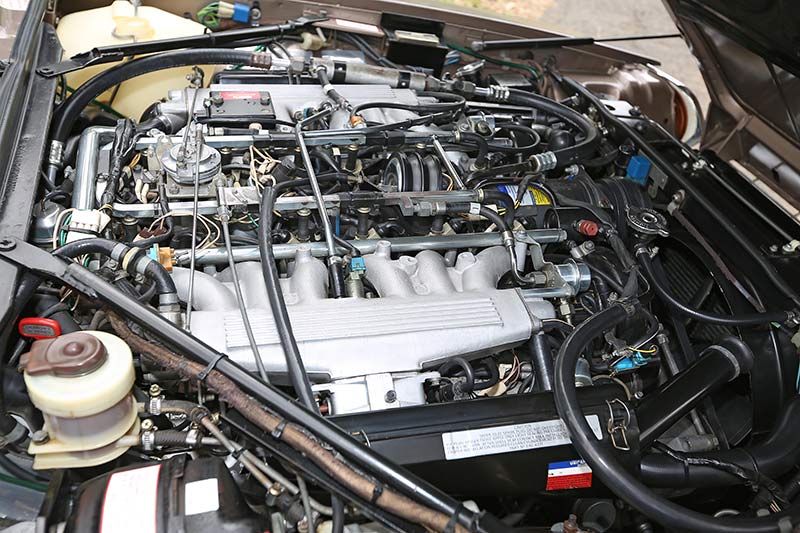
SUSPENSION & BRAKES
Six shock absorbers, rubber mounts and bushes everywhere and a complex rear suspension ensure money will need to be spent underneath even a reasonably sound XJS. Once the work is done though these cars deliver a very modern ride/handling balance. The brakes work hard and suffer from differential heat at the rear. Make sure the handbrake will hold the car as changing the pads for it is a fiddly job. Improved rotors and pads are available and essential for cars that may be used for lap dashes or other competition activity.
INTERIOR & ELECTRICS
Leather trim plus a baking climate is not a good blend. Gauges after 20-40 years can give haphazard readings so switch off after test driving, restart the engine and watch the temperature and oil gauges. If one zooms into the red and the other dips to almost zero you either have a very sick engine or lousy electrics. Checking that windows, the heater, air-conditioning and all gauges operate as they should will save future expense. Convertible buyers need to pay special attention to the speed and smoothness with which the top can be retracted and raised.
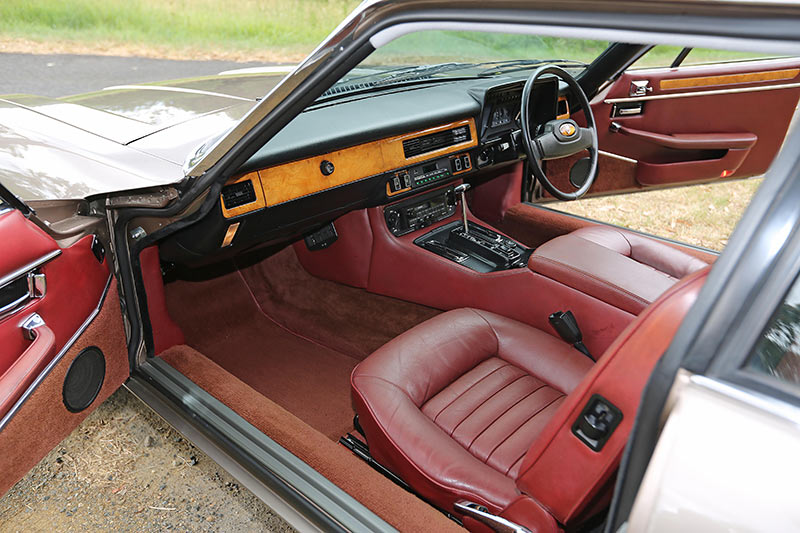
JAGUAR XJS OWNER: TONY HERALD
Queensland Jaguar Drivers’ Club President Tony Herald owns an XJS that, for much of its life, has been ranked as the best of its breed in Australia. And it’s got a shelf full of trophies to prove it. Yet this almost flawless example didn’t start life as a pampered show car.
"It had been used pretty much as a regular car and traded to a dealer on the Gold Coast in 1992 by a fellow Jaguar Drivers Club member," Tony recalled. "I just happened to see it advertised in the weekend paper and bought it before it had even been detailed."
The Antelope metallic coupe was tidy enough and showing 128,000 kilometres (now 170,000) but needed a lot of time and some new parts including a complete exhaust system before winning Car of the Day at the 1995 Jaguar Clubs’ National Rally in Brisbane.
Tony believes that keeping on top of maintenance and not ignoring niggling faults until they become big and costly is the best way to enjoy V12 Jaguar ownership.
"People have horror stories about how all these things go wrong with an XJS and none of it applies to this car," he said. "You have to maintain a car and replace parts as they wear but it doesn’t overheat and so far has been very reliable."
SPECIFICATIONS
1975-96 Jaguar XJS
NUMBER MADE 115,413
BODY STYLES integrated body/chassis two-door coupe, cabriolet & convertible
ENGINES 3590cc and 3980cc in-line six, 5343cc or 5993cc V12
POWER/TORQUE 198kW @ 5250rpm, 406Nm @ 3000rpm
(HE V12)
TRANSMISSION 3 or 4-speed automatic, 4 or 5 speed manual
SUSPENSION Independent with coil springs upper & lower wishbones, telescopic shock absorbers
BRAKES Discs with power assistance, ABS on some
PRICE RANGE $2500-30,000 (5.3 coupe) $8000-45,000 5.3 conv.)
CONTACT Jaguar Clubs in all States
http://www.xjsdata.com/
Unique Cars magazine Value Guides
Sell your car for free right here
Get your monthly fix of news, reviews and stories on the greatest cars and minds in the automotive world.
Subscribe

.jpg)











.jpg)
